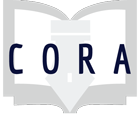Assignment
Copyright, Fair Use, and Creative Commons: An Active-Learning Exercise for Studio Art Students
This article describes an active-learning exercise intended to help teach copyright, fair use, and Creative Commons licenses. In the exercise students use a worksheet to draw original pictures, create derivative pictures on tracing paper, select Creative Commons licenses, and explore commercial usage, fair use, and copyright infringement. Librarian-instructors may find the completed worksheets to be useful aids to supplement copyright lectures; student perspectives will be integral because they are generating the examples used in discussion. Although a scholarly communication librarian developed this exercise to help introduce some basic copyright information to an undergraduate studio art and design class, the exercise can be performed in a general educational setting.
Recommended citation:
Boston, A. J. (2020). Copyright, Fair Use, and Creative Commons: An Active-Learning Exercise for Studio Art Students. Journal of Copyright in Education and Librarianship, 3(3), 1-12. https://doi.org/10.17161/jcel.v3i3.8193
| Attachment | Size |
|---|---|
| 1.44 MB |
Introductory understanding of how copyright, fair use, and Creative Commons licenses.
Information Literacy concepts:
Individual or Group:
Ability Level:
This exercise was created, developed, and used with senior studio art majors enrolled in a capstone course. Students were to upload their creative portfolios to an open access institutional repository, with the option of assigning a Creative Commons license of their choosing. The scholarly communication librarian and author of the article came up with the exercise as a fun, engaging way to teach the students about copyright, fair use, and Creative Commons licenses in a one-shot session.
Supplements for this article, including the worksheet, activity slide presentation, and students examples are freely available on the publisher site.
This is designed as a standalone one-shot session, but would be much more effective spread across two class sessions, with one of the sessions devoted to lecture and discussion.

